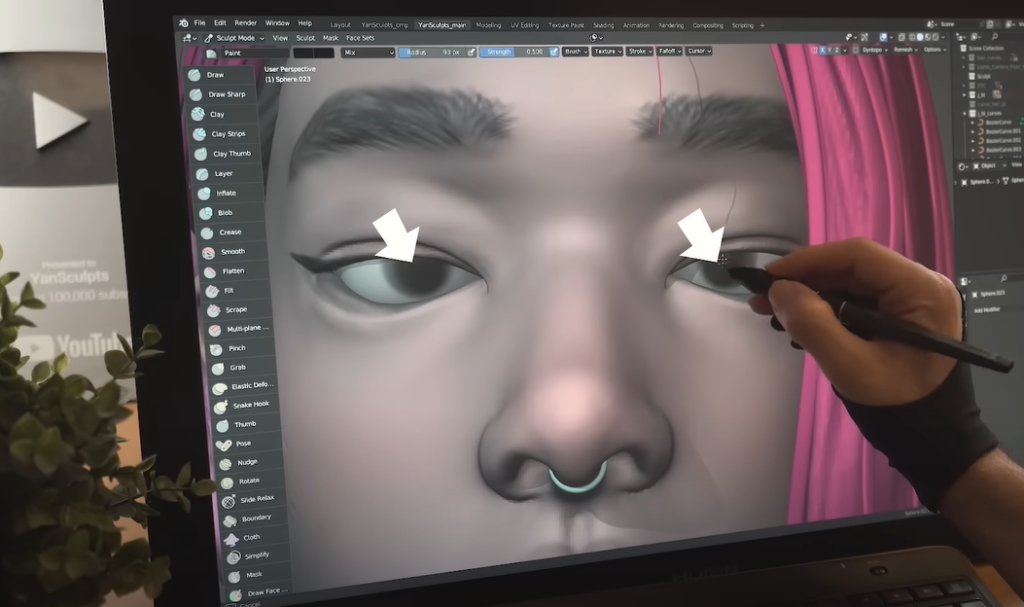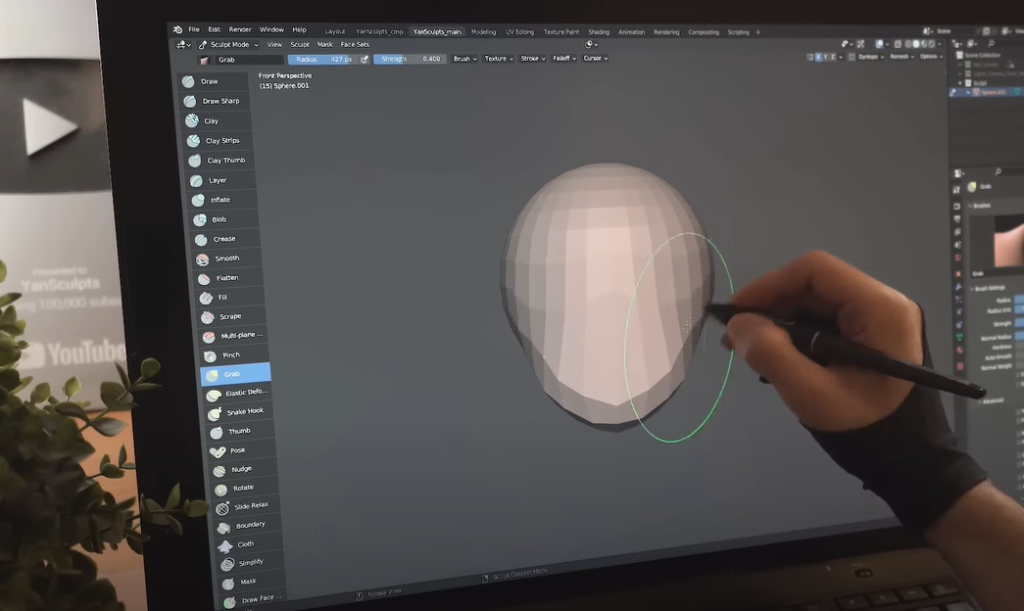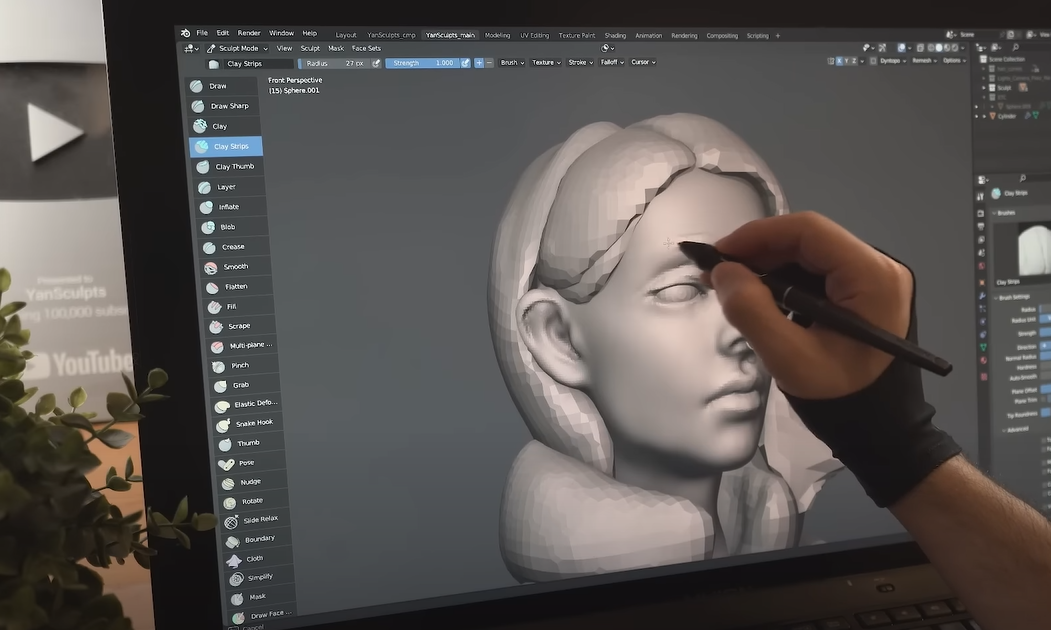The creation of three-dimensional objects via specialized software is known as 3D modeling. The objective is to create a mathematical representation of any three-dimensional surface of an object. Designers construct 3D models through careful manipulation, forming an entity that can be observed from all angles, replicating reality to the highest degree.
The Diversity of 3D Modeling Techniques
Various techniques are available for constructing 3D models, with each offering unique benefits and applicability to different projects:
- Box Modeling: Also referred to as subdivision modeling, this technique is the most commonly used method and ideal for beginners due to its intuitive nature. It entails starting with a basic geometric shape (a ‘box’) and refining this primitive form into a complex, finished figure;
- Spline or Curve Modeling: Instead of beginning with a primary shape, this technique involves the use of curves or “splines” to generate an object’s form. This method is particularly suitable for objects with a complex topology, such as vehicles, landscapes, or intricate architectural designs;
- Digital Sculpting: This form of modeling is similar to sculpting in the physical world, allowing the artist to ‘carve’ their model out of a digital block of material. This method is typically used for creating highly detailed and organic shapes, often seen in character design;
- Procedural Modeling: This technique relies on algorithms and mathematical functions rather than manual manipulation, resulting in highly complex and random shapes that mimic natural formations like landscapes, trees, and rocks.
Understanding the 3D Modeling Workflow
3D modeling typically unfolds in three crucial stages:
- Conceptualization: The process starts with concept art, which could be a simple sketch or a comprehensive piece, depending on the complexity of the model. The primary aim at this stage is to outline the shape, structure, and aesthetic direction of the model;
- Technical Work: The concept sketch transitions into a digital format using 3D modeling software. This phase involves forming the model’s geometry, adding textures to give it a realistic look, and incorporating lighting and shading to define the depth and contours;
- Refinement: Once the primary structure of the model is complete, it is time to refine the details. This step includes checking for topological errors, refining textures, improving lighting, and enhancing the overall aesthetics to produce a visually appealing model.
Comparison of 3D Modeling Techniques
| Technique | Ideal For | Not Suitable For |
|---|---|---|
| Box Modeling | Character and organic modeling | Highly detailed objects |
| Spline Modeling | Complex structures | Organic shapes |
| Digital Sculpting | High-resolution, detailed models | Simple and geometrical shapes |
| Procedural Modeling | Natural landscapes and structures | Man-made objects, characters |
Embracing the Magic of 3D Animation

3D animation takes static 3D models and breathes life into them, creating dynamic scenes that mimic the motion of real-world objects. It is an art that requires a deep understanding of motion, physics, and the subtleties of character emotion and interaction.
The Marvel of 3D Animation
At the core of 3D animation lies the art of breathing life into static 3D models, transforming them into dynamic and believable characters and scenes. This art is a seamless blend of artistic vision and technical prowess. Animators meticulously craft the movement, expressions, and interactions of characters, unleashing the magic of storytelling in ways that were once thought impossible.
The Prerequisites of Mastery
Mastering the art of 3D animation demands an array of skills and a relentless pursuit of excellence. It goes beyond understanding software tools; it requires a profound comprehension of motion, physics, and even the subtleties of human emotions. To create compelling animations, animators must perceive the world through the eyes of their characters, empathizing with their feelings and motivations to deliver authentic performances.
The Tools of the Trade
The world of 3D animation is powered by cutting-edge software and hardware. Leading 3D animation software such as Autodesk Maya, Blender, and Cinema 4D provide the canvas on which animators paint their virtual masterpieces. These platforms offer a plethora of tools that enable animators to control movements, lighting, and materials with exquisite precision. The blend of technical mastery and artistic creativity makes 3D animation an enthralling craft.
The Stages of Animation
The process of creating 3D animation is an intricate journey with several stages, each contributing to the final enchanting product. Here’s an overview of the key stages:
a. Pre-Production: This initial phase involves concept development, character design, and storyboarding. Animators lay the foundation for the animation, setting the stage for the magic to come.
| Stage | Description |
|---|---|
| Modeling | In this stage, animators sculpt the 3D models, giving form to the characters, objects, and environments. This phase is akin to chiseling a statue from a block of stone, bringing the virtual world into existence. |
| Rigging | Rigging is like adding a digital skeleton to the 3D models. Animators create a system of bones and controls that enable characters to move and articulate naturally. |
| Animation | The heart of the process, animators breathe life into the models by defining their movements, expressions, and interactions. It is the phase where characters’ personalities shine through their actions. |
| Lighting and Texturing | Illumination and texturing are like painting the canvas with vivid colors. Animators set the mood, ambiance, and atmosphere of the scene to evoke emotions and immerse the audience. |
| Rendering | In this stage, the animation is transformed into a series of images or frames. The software meticulously captures the essence of each frame, ready for the final assembly. |
| Post-Production | Finally, animators put all the elements together, fine-tuning the animation, adding special effects, and integrating audio to complete the enchanting experience. |
Applications of 3D Animation
The impact of 3D animation extends far beyond entertainment. This magical art finds applications in various industries, including:
- Entertainment: 3D animation graces the silver screen with captivating movies and takes center stage in animated series and video games, immersing audiences in fantastical worlds;
- Advertising and Marketing: 3D animation breathes life into product demonstrations, making them more engaging and informative. Brands use 3D animation to create memorable commercials and promotional content;
- Education: 3D animation helps educators visualize complex concepts, making learning more enjoyable and accessible for students of all ages;
- Architecture and Real Estate: 3D animations enable architects and real estate developers to showcase their designs and projects with photorealistic visualizations;
- Medicine and Science: 3D animation assists medical professionals in visualizing and explaining complex procedures and scientific concepts, aiding in education and research.
Decoding the 3D Animation Workflow

Just like 3D modeling, animation follows a sequence of stages:
- Layout: This is the stage where the animator sets up the virtual scene, placing characters and props in their initial positions. The camera angle for the scene is also established at this stage;
- Blocking: This phase is where the animator places the key poses for the characters. These poses represent the most significant points of motion, providing an overview of the sequence’s main action;
- Splining: At this stage, the animator makes the computer generate the “in-between” frames. This process is also called ‘tweening.’ It creates a smooth transition from one key pose to the next;
- Refinement: This phase involves adjusting the animation by adding secondary actions and further defining the timing. In addition, subtleties such as facial expressions, hand movements, and eye direction are added at this stage;
- Polishing: The final stage of the process is where the animator reviews the entire sequence and makes any necessary adjustments to ensure fluid motion and believable interactions between elements.
Choosing the Right Tools: 3D Modeling and Animation Software
Numerous software tools cater to 3D modeling and animation. The choice largely depends on personal preference, project requirements, and budget. Some of the most prevalent tools include:
- Autodesk Maya: Preferred by many industry professionals, Maya provides a robust toolset for both modeling and animation, making it suitable for a broad range of projects;
- Blender: This open-source software is accessible to everyone due to its free license. It boasts comprehensive tools for 3D modeling, animation, rendering, and even video editing and game development;
- ZBrush: Renowned for its potent digital sculpting tools, ZBrush is the go-to software for many artists when creating highly detailed and organic forms;
- Cinema 4D: Known for its user-friendly interface and extensive tools for motion graphics, Cinema 4D is favored by designers in the broadcasting industry.
Conclusion
3D modeling and animation are multi-faceted disciplines with broad applications in numerous fields. Mastery of these skills can open a plethora of creative opportunities, allowing you to bring your imagination to life in the most vivid and dynamic ways.
FAQ
Becoming proficient in 3D modeling and animation depends on several factors, including the complexity of the skill, the individual’s prior experience and understanding, the quality of teaching resources, and the time invested. Generally, gaining a solid understanding may take anywhere from a few months to a few years.
While formal education can provide structured learning and credentials, many industry professionals are self-taught. There are numerous online resources, tutorials, and courses available that can guide you through mastering these skills. A strong portfolio showcasing your abilities often holds more weight than formal qualifications.
The applications of 3D modeling and animation are vast. Some possible career paths include game designer, animator for films or television, visual effects artist, product designer, architectural visualizer, and many more. The skills are also in demand in sectors like advertising, medicine, science, and education.
